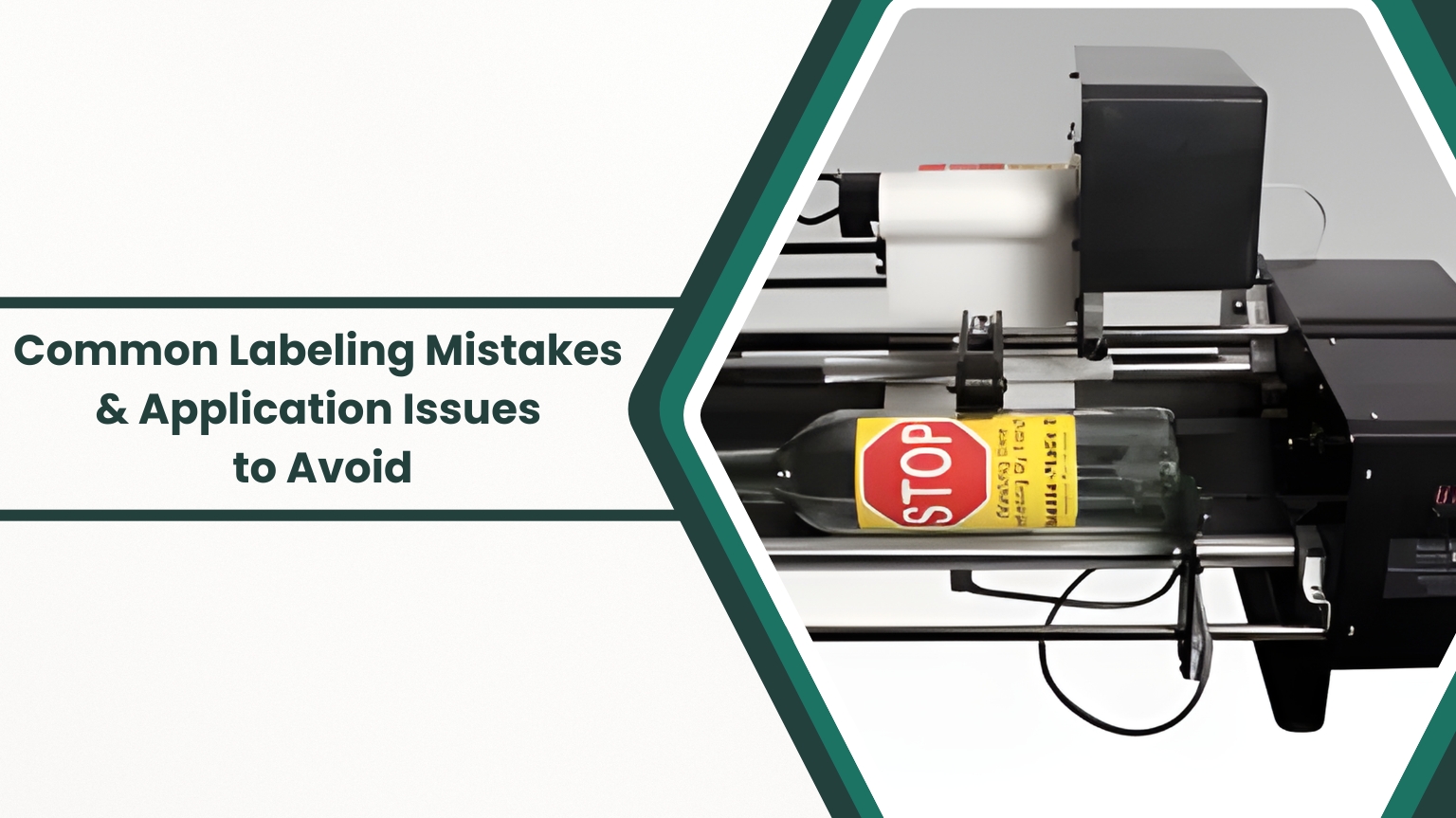What Are the Most Common Labeling Mistakes and Application Issues to Avoid?
When it comes to product packaging, labels play a vital role in building brand identity, communicating product details, and influencing purchase decisions. However, even a small labeling mistake can make a product look unprofessional or lead to compliance issues. Whether it’s poor adhesive performance, incorrect placement, or low print quality, labeling errors can cost time and money.
As a trusted labeling company, Aart Stroke helps brands create flawless, durable, and visually appealing labels. In this blog, we’ll explore the most common labeling mistakes and application issues you should avoid to ensure your packaging always looks perfect.
Choosing the Wrong Label Material
One of the most frequent labeling mistakes is selecting the wrong material for the product surface or environment. Not all materials perform well under the same conditions.
- Paper labels can wrinkle or peel in moisture-rich environments.
- Plastic or waterproof labels are better for beverages, cosmetics, and refrigerated products.
Tip from Aart Stroke: Always match the label material with the product’s surface, usage, and storage conditions. For example, use waterproof and temperature-resistant labels for bottled drinks or cold storage products.
Ignoring Surface Preparation
Labels won’t stick properly if the surface is dirty, oily, or wet. Improper cleaning can lead to bubbling, peeling, or poor adhesion.
Before applying labels, make sure the surface is:
- Clean and dry.
- Free from dust, oil, or residue.
- At room temperature (extreme heat or cold can affect adhesion).
Aart Stroke uses advanced labeling technology that ensures every label is applied smoothly and securely for a professional finish.
Incorrect Label Application Pressure
The right amount of pressure is essential during label application. Applying too little pressure may prevent the adhesive from bonding properly, while too much pressure can cause wrinkles or distort the label. Automated application systems used by Aart Stroke ensure consistent pressure and placement, helping you avoid uneven or crooked labeling.
Using the Wrong Adhesive
Not all adhesives work for every surface. For instance, a label meant for glass might not stick effectively to plastic. Similarly, refrigerated or frozen items require cold-temperature adhesives to maintain grip in humid conditions.
Common adhesive types include:
- Permanent adhesive: For long-lasting adhesion.
- Removable adhesive: For temporary applications.
- Freezer-grade adhesive: For cold or frozen environments.
Aart Stroke helps clients select the best adhesive type to ensure reliable label performance.
Poor Print Quality and Design Errors
Even if your label sticks perfectly, poor printing or design issues can hurt your brand image. Low-resolution graphics, faded colors, or incorrect information make the product appear unprofessional.
To avoid this:
- Always use high-resolution designs (300 DPI or above).
- Ensure text and images are aligned properly.
- Double-check spelling, barcodes, and batch information before printing.
At Aart Stroke, every label undergoes quality checks and color calibration to maintain clarity, consistency, and brand accuracy.
Incorrect Label Placement
Uneven label placement can instantly downgrade your product’s visual appeal. Labels applied at an angle or off-center disrupt uniformity, especially on cylindrical bottles or jars. Automated application systems at Aart Stroke ensure perfect alignment and consistency across every label—enhancing your product’s shelf appeal.
Neglecting Environmental Factors
Temperature, humidity, and storage conditions directly impact label performance. Exposure to moisture or sunlight can cause fading, curling, or adhesive breakdown.
Pro Tip:
Store labels in a cool, dry place and apply them under controlled conditions for the best results. Aart Stroke uses UV-resistant inks and weatherproof materials to help labels withstand environmental stress.
Overlooking Label Compliance Requirements
Each product category—whether food, cosmetics, or beverages—has specific labeling guidelines. Missing mandatory details such as ingredients, expiry dates, or recycling symbols can lead to legal issues. Aart Stroke ensures all printed labels comply with industry regulations and brand guidelines, keeping your packaging both attractive and compliant.
Inconsistent Label Finishes
Mixing gloss and matte finishes without planning can lead to an inconsistent appearance. A unified finish makes products look premium and cohesive. A consistent finish also helps with durability—Aart Stroke offers options like laminated, UV-coated, and matte finishes for long-lasting visual appeal.
Skipping Final Quality Inspection
Rushing through labeling without a final check is a costly mistake. Misaligned or defective labels may go unnoticed until after distribution. Aart Stroke’s multi-step quality inspection process ensures that each batch meets the highest standards for adhesion, color, and print precision before delivery.
Conclusion
Labeling may seem simple, but small mistakes can lead to big problems—from peeling and fading to damaged brand perception. By focusing on the right materials, adhesives, and application methods, you can ensure professional, long-lasting results. With years of expertise, Aart Stroke provides end-to-end labeling solutions—combining design, printing, and application precision to help your products stand out on the shelf.

